Vegetable gardening is a fun and gratifying job. Nothing feels better than picking your own homegrown carrots or cucumbers to make a salad.
The majority of veggies are straightforward to care for. You plant a seed or seedling, water it frequently and ultimately, it turns into the edible version you were looking forward to.
Other vegetables, however, require a bit of skill and finesse. In the following post, we’ll be looking at 11 of the hardest crops to grow.
Table of Contents
Which are the hardest crops to grow?
- Artichoke
- Onion
- Cauliflower
- Eggplant
- Carrots
- Celery
- Head lettuce
- Watermelon
- Sweet potato
- Asparagus
- Japanese Horseradish
1. Artichoke

Thistles are often thought of as prickly weeds, and no homeowner would want to add a weed to their garden. But the artichoke is a unique crop. Scientifically known as Cynara scolymus, this plant proves that thristles have a good side to them.
That said, not everyone manages to grow artichoke. It has stringent climate requirements and is susceptible to a particular pest.
It’s native to the Mediterranean, where it’s grown as a perennial. This explains why it does so well in California, which shares a fairly similar climate. But other than this state, it rarely does well in other parts of the country.
Generally, artichokes thrive in moderate climate conditions. So if you live in an area that experiences cold or hot temperatures, you’re better off growing it as an annual.
Another factor that makes this crop easy to grow entails its susceptibility to aphids. Those tiny, soft-bodied insects suck sap from the plant, resulting in stunted growth of the leaves.
Other requirements that an artichoke requires include a well-draining, fertile soil with a slightly alkaline pH. This crop also requires watering quite frequently, about 3 times in a week.
This is essential to keep the flower buds tender and fleshy. Finally, applying a fertilizer throughout the growing season makes for a nice boost.
2. Onion
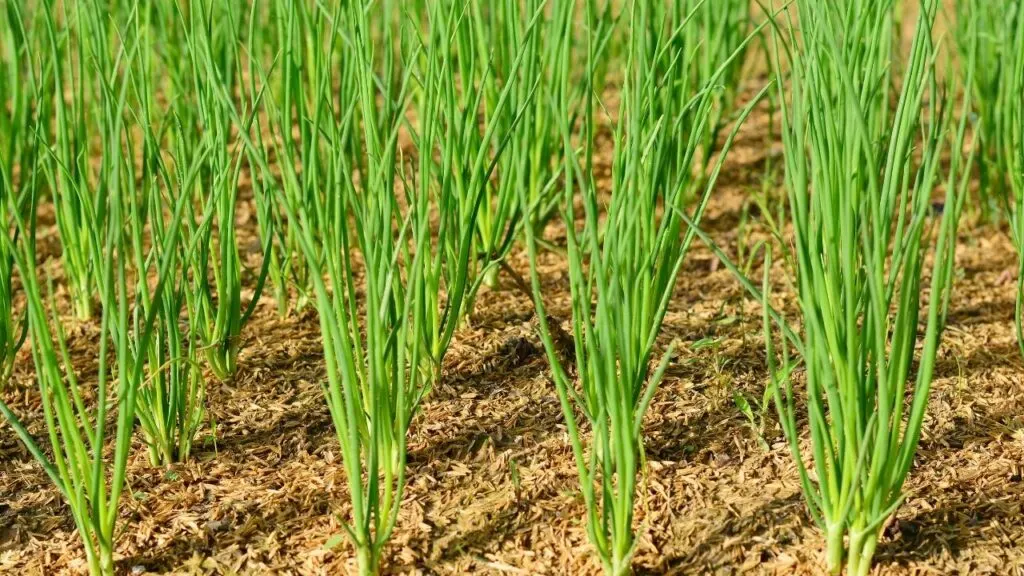
Scientifically known as Allium cepa, an onion is a cold season crop grown primarily for its edible bulb. Its stem forms a flattened disc at the plant’s base while its leaves, which are usually 3 to 8 in number, take a tubular structure.
But perhaps what’s more intriguing about this crop is its endless versatility. You can eat them raw, toss in stews, add to bread or even use them in casseroles.
Dozens of recipes begin by sauteing a couple of diced onions, which makes this vegetable a real staple in cooking.
So imagine the convenience you’d get if you grew it in your kitchen garden. Sounds easy, right? Well, not quite. Turns out, onions are among the hardest veggies to grow.
This stems from the fact that different varieties of onions require different lengths of time for sunlight exposure. It’s important to get the lighting aspect because this is what determines the growth of bulbs.
In that regard, they’re divided into long- and short-day varieties. The first type needs sunlight exposure for several hours ranging between 14 and 16. The latter thrive under 10 to 12 hours of the same factor.
We also have day-neutral onion species which do best when exposed to the sun for between 12 and 14 hours.
Unfortunately, some gardeners are not aware of this, so they end up growing the wrong type of onion for their area. For Northern-based residents, the ideal onion species is the long-day one since this area experiences longer summer days.
Conversely, short-day onions fare better in the South, which receives less sunlight. Day-neutral ones can grow in almost any region. ”
Other factors you should take into account when growing this crop are the type of soil. You want to grow it fast-draining, slightly acidic, rich soil. It’s also good practice to apply an all-purpose fertilizer.
This crop also needs adequate water; water once a week to a depth of about one inch.
3. Cauliflower
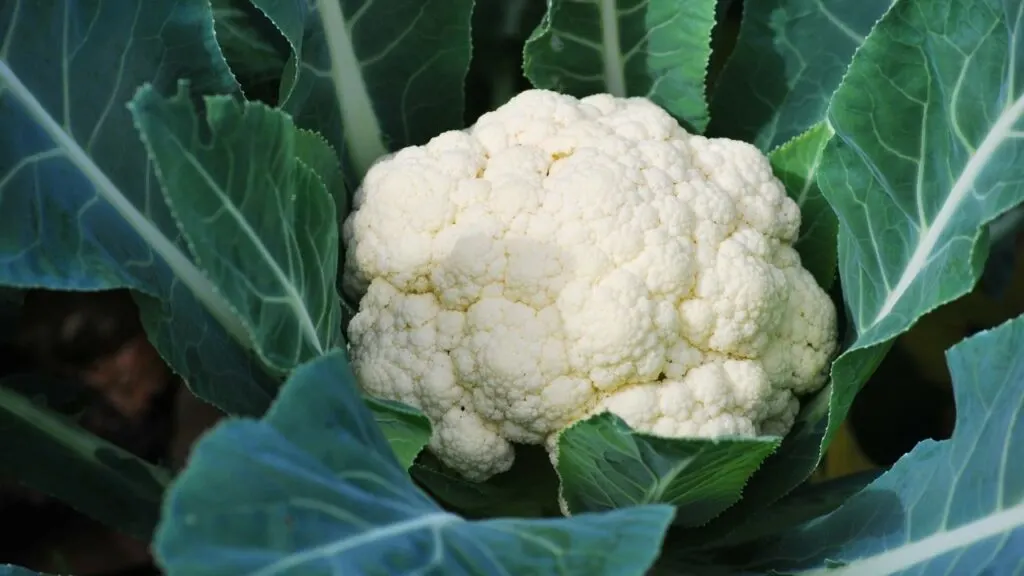
You probably know cauliflower for its incredible anticancer powers. Classified in the Brassica family of veggies, it consists of the antioxidant sufloraphane glucosinate, which mitigates the risk of bladder, breast and prostate cancers.
Healing powers aside, this vegetable packs a punch of nutritional benefits. So if you’re considering adding it to your kitchen garden, you’re headed in the right direction.
The only problem is, cauliflower is regarded as one of the hardest crops to grow, and rightly so. It requires the temperature to be kept steady in the mid-range values of 65 to 80F.
This way, the crop can mature before the high temperatures of summer set in, but not so early that it starts to freeze from the cold season.
Without this, there’s a high chance that it will “button” prematurely. What this means is that it will form tiny button-sized heads as opposed to one large head.
Furthermore, this crop has to be blanched or get its stalks bent, to pave way for the outer leaves that usually come up and cover it. The leaves then need to be tied and remain in that position till the head fully matures.
But if you can get these factors right, the rest should be smooth sailing. These include exposing the crop to at least 6 hours of full sun and growing it in a rich, well-draining, moist soil.
You’ll also need to maintain high humidity and keep it well-watered throughout the growing season.
For propagation, all you need to do is plant its seeds indoors, about ½-inch deep, and in a moist growing medium. Once they start to sprout, you can transfer them outdoors and continue caring for them.
4. Eggplant
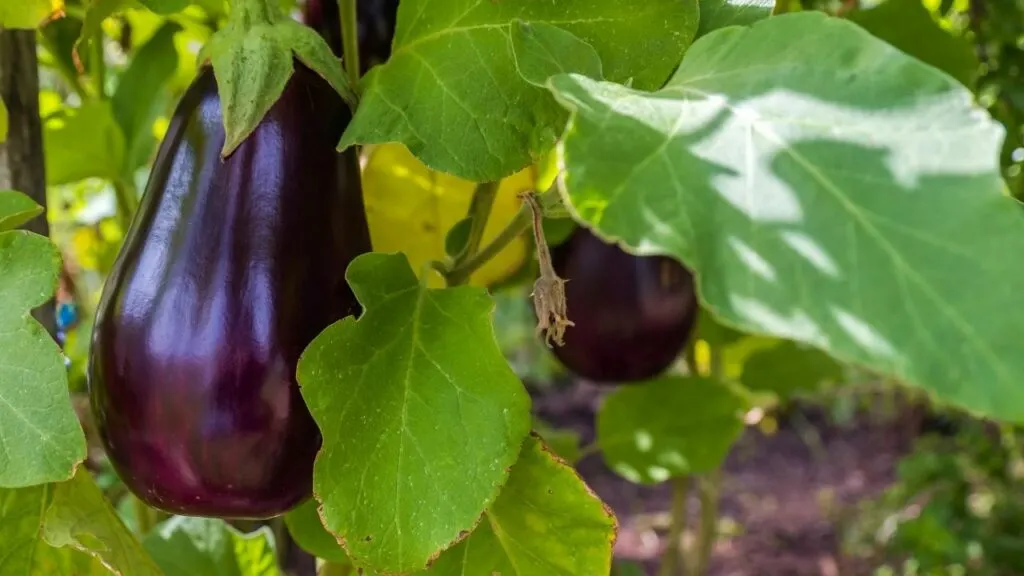
Eggplant is a heat-loving crop that can take on a wide range of sizes, shapes and colors. But the one you’re most likely to encounter is the long and slender, deep-purple variety with a light tan to brown hue on the inside.
A key highlight of this plant is the fact that it’s highly-versatile. A staple in Mediterranean cuisines, it can be boiled, baked, grilled or fried. Plus, it’s used to garnish and as a distinct ingredient in many stews.
Unfortunately, these benefits can feel a little far-fetched considering how difficult it is to grow eggplants. There are two main issues that gardeners trying to grow this crop encounter, namely, maintaining consistently warm temperatures and pests.
Eggplant likes it hot! By this we mean temperatures between 70°F and 85°F. Even at night, the temperature shouldn’t go below 60°F.
If a cold spell hits unexpectedly, ensure you cover your plant to protect it from the freezing temperatures.
This crop is also highly susceptible to pests, primarily, the flea beetle. This insect attacks by poking multiple, tiny holes into its leaves. To combat it, consider growing your plant indoors until early summer.
If you have to grow it outdoors, then be sure to cover it with floating row cover.
Other growing factors aren’t as hard to manage. For instance, you should plant it in a well-draining potting soil, which can also stay consistently moist.
If growing in a container, adding mulch is a nice way to keep the soil moist. This plant also requires fertilizer, in particular, a well-diluted, all-purpose fertilizer.
5. Carrots
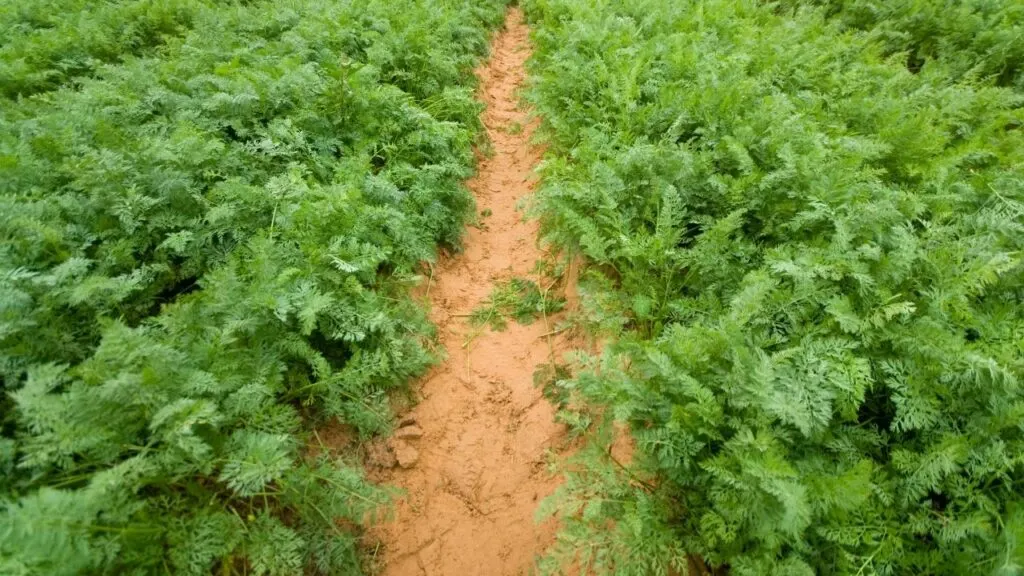
The herbaceous Daucus carota, which is native to Southwestern Asia and Europe, is another crop that can be hard to grow. A root vegetable, this crop often has an orange hue. But it’s not unusual to find yellow, purple, black or red carrots.
This plant’s foliage is usually dissected, and comprises fern-like compound leaves. The flowers contain 5 petals and sepals, and they’re formed in compound umbels.
The biggest issue that gardeners encounter is the failure of the seed to germinate. Here’s the deal- if the soil is too dry or had, the seedling won’t be able to break through; hence, it won’t germinate.
But, planting this crop in soggy soil is not ideal either, and it can actually lead to root rot. So most gardeners find it difficult to strike that sweet spot, where the soil is just slightly moist but not waterlogged.
One trick that I find really effective is planting some radish seeds right next to the carrots. Since the radishes germinate first, they help keep the soil loose.
For the best outcome, you’ll also want to plant your carrots in soil that is well-draining and well-cultivated. You can choose to add a general-purpose fertilizer as well.
Keep the temperature between 60 and 70°F and the humidity at least 95%.
Carrots are one of the easiest root veggies to propagate. They can be grown from either nursery seedlings or by way of sowing seeds directly from your garden.
If you opt for the latter method, ensure you start immediately the soil becomes viable in spring. The seeds should have germinated in the next 10 to 21 days.
6. Celery
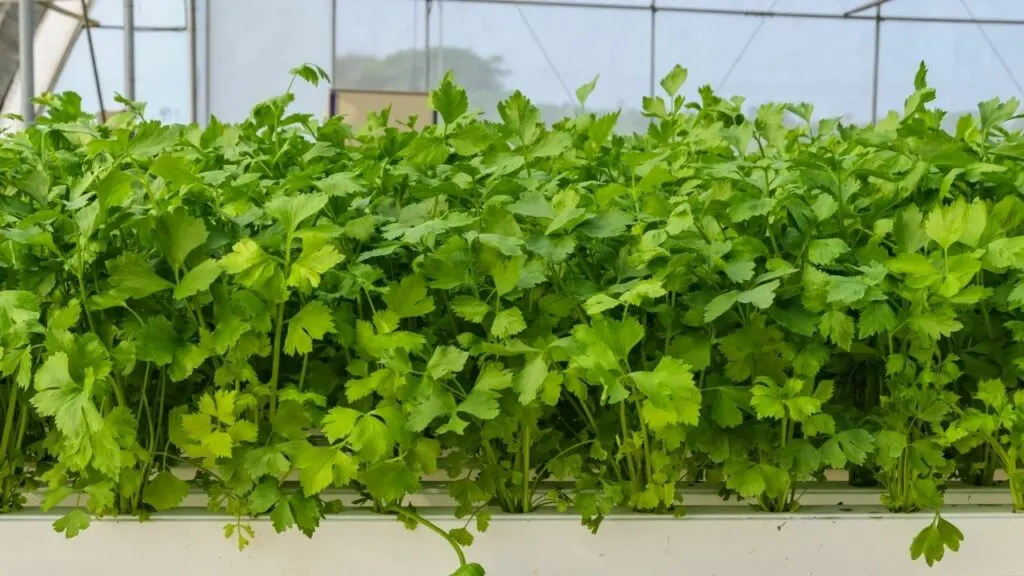
A biennial, celery is revered for its distinct aroma. The plant, which is known scientifically as Apium graveolens, is grown mainly for its stalk and taproot, which are used widely as vegetables.
This crop consists of rhombus-shaped leaves, which usually grow in a rosette. It also produces beautiful, white umbels of small flowers.
What makes celery particularly difficult to grow is the fact that most gardeners can’t get the potting medium and timing of the harvest, right.
If you want your celery to grow healthily, it’s crucial that you plant it in compost-rich, well-draining, but capable-of-retaining-moisture soil.
Similarly, it’s good to exercise a bit of patience when it comes to harvesting. Some gardeners harvest way too early and end up with very thin stalks because the plant isn’t immature.
Experts recommend waiting until 130 to 140 days, which is how long celery takes to mature.
Other than these two issues though, you should find caring for celery easy for several reasons.
To start with, it’s a plant that can be grown in a container. Just ensure that the pilot is at least 8 inches deep to allow celery ample room for growth.
Two, the soil should be well-draining but capable of moisture retention as well as slightly alkaline (6.0 to 6.5 pH).
So if you’re using soil, which is slightly acidic, you can incorporate elements like limestone which helps to cut back on the acidity. Finally, keep temperatures in the range of 60°F – 75°F. (15°C – 23°C).
7. Head Lettuce
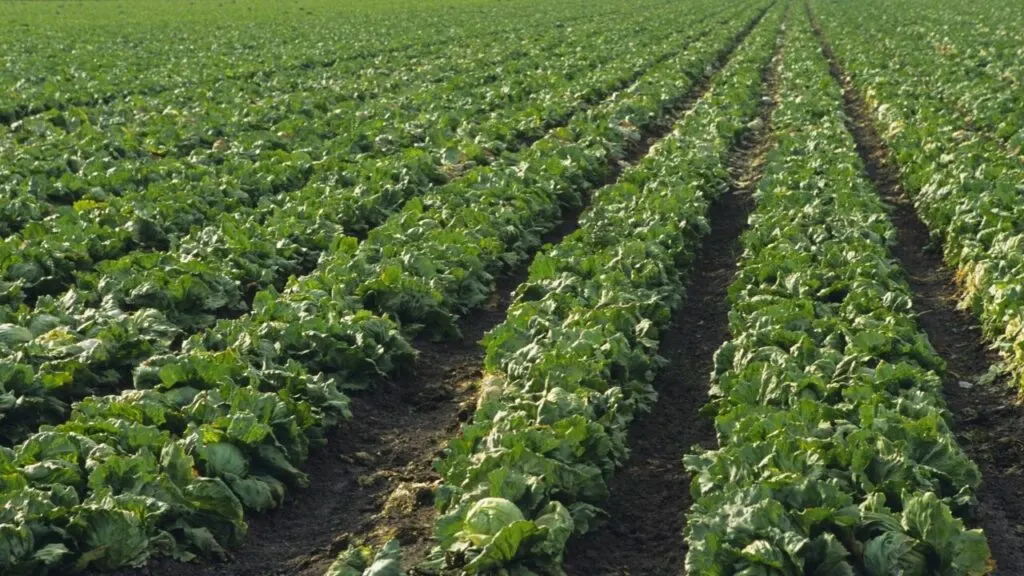
Also known as the crisp-head lettuce, head lettuce is a herbaceous vegetable whose leaves grow in a dense rosette. It prefers cooler temperatures, which makes it fit for growing in spring or fall.
Since it produces for such a long time, head lettuce is a favorite crop for many gardeners. However, this doesn’t mean that it’s easy to grow. In fact, a lot of people struggle with it, mainly due to the fact that it requires uniform watering and consistent temperatures.
If either of these conditions aren’t met, you will encounter this issue called bolting. In layman terms, bolting is the process where a crop switches from leafy growth to flower production.
Ideally, you would be happy if you saw your garden plants bloom. But for crops like lettuce, which are grown primarily for their sweet, and crunchy leaves, this is a bad thing.
To avoid this, ensure you pick the right spot for planting this crop. Place your potted plant on a shaded deck or right next to taller, shade-producing crops that can offer a bit of protection from the sun.
Also, it should be grown in slightly-moist soil. You can add mulch to your potting mix, which is good at preserving the soil’s moisture.
When it comes to watering this crop, focus on frequency and consistency. The soil needs to be kept constantly moist, but be careful not to overwater as this can lead to rotting.
Furthermore, maintain temperatures in the range of 60 to 65°F (16 to 18°C) and the humidity level between 50 and 70%.
8. Watermelon
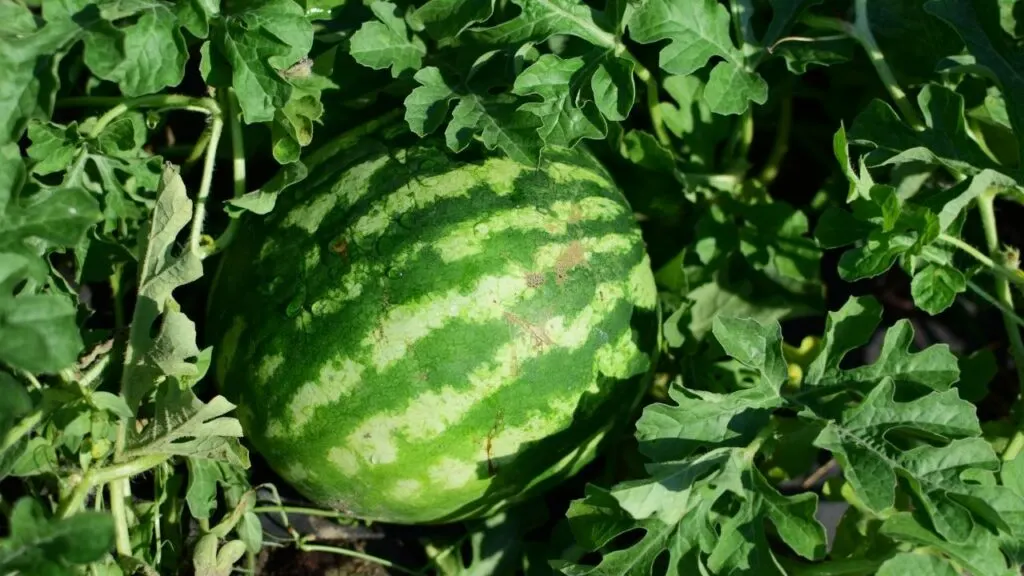
Watermelon is a vining plant, which is usually grown annually. When mature, its vines appear rather thin and bear deeply-lobed pinnate leaves. The crop, which is grown primarily for its succulent fruit, also produces singly yellow flowers.
On a hot sweltering day, nothing feels better than chomping into this plant’s oblong-shaped and very juicy fruit. Sadly, it’s not the easiest crop to grow, and this stems from how difficult it is to tell when its fruits are ready.
If you harvest them too early, you will end up with fruits which are white on the inside, instead of pink and juicy.
This plant also requires a huge chunk of space, not to mention, a lot of heat for proper growth. Specifically, it has a long and warm growing season, which can last anywhere between 70 and 85 days.
This makes it unsuitable for growing in the northern countries, where temperatures are often cooler.
Since the watermelon crop thrives in full sun, an easy way to achieve this is to plant it in elevated rows. This way, the sun’s rays will hit the soil directly; hence, keeping the plant and roots warm enough.
That said, you can still plant it at ground-level, but in this case, it would be a good idea to warm the soil ahead of time.
In addition to providing full sun, another requirement of this crop is loose, well-drained and moisture-retentive soil. The ideal growing medium should also have a pH of 6.0 to 6.5 and be fertile.
If it’s not, consider incorporating aged compost or aged manure to the kitchen garden prior to planting.
Another important thing to consider is spacing. Watermelon fruits can get quite big, which is why you should leave ample space from the start. Experts recommend sowing seeds about 1 inch deep and at least 6 feet apart.
9. Sweet Potato
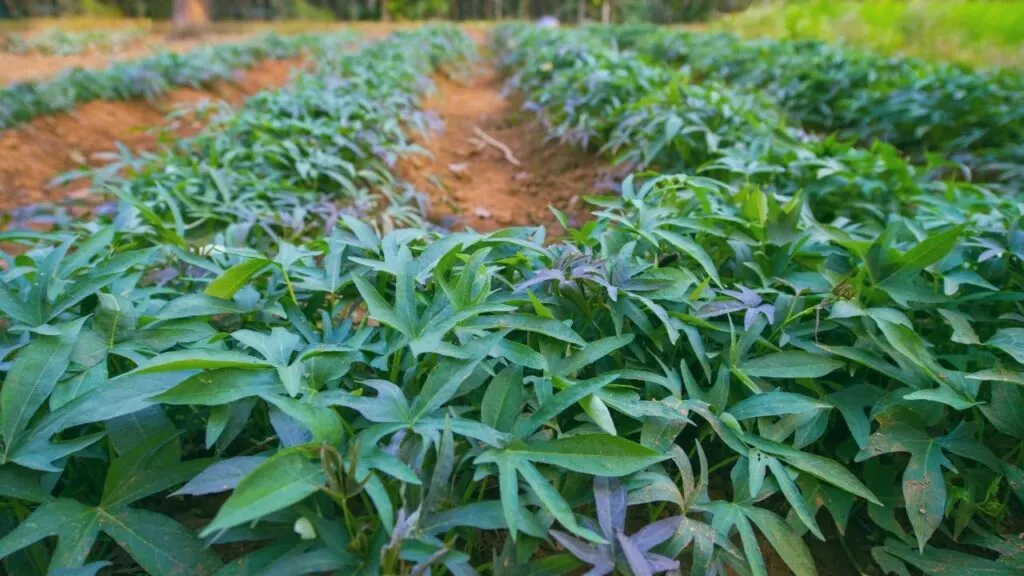
Sweet potatoes make an excellent addition to any kitchen garden for several reasons. They’re low in calories, and high in fibre, which makes them a nice alternative to the starchy potatoes.
It also doesn’t hurt that they have a really sweet flavor. Plus, it looks good in any garden. When it blooms, it produces gorgeous white, pale to deep lavender flowers.
While it would be nice to have this flavorful root veggie for breakfast every once in a while, a sweet potato isn’t the easiest crop to grow.
This is primarily because of its long hot growing season. Depending on the variety, it takes between 3 and 6 months for this crop to mature. It means that if you live in an area that experiences cold weather for the better part of the year, you won’t have much success with this crop.
But if the weather is right, all you need to do is meet a couple of other requirements, and you can reap the benefits of this crop. The soil should be well-draining and rich in organic matter.
If you have to choose between sand and clay, go for sand because it’s less dense.
While this crop can fare well in dry soil, it’s advisable to water it once a week, about an inch deep. However, do away with watering, 3 to 4 weeks before harvesting.
This is crucial to prevent mature tubers from splitting. Keep temperatures between 75° and 95°F (24 – 35°C) and a humidity level of 60 to 75%.
10. Asparagus

A tall plant, asparagus bears scale-like leaves, which emerge from the stems underground. The flowers, which are green-white to yellow in color, grow either alone or in pairs.
Another distinct feature of this crop entails its versatility. It can be incorporated into numerous dishes from stir-fries to salads, pastas and frittatas.
While it’s a handy ingredient, it’s also one that’s a little difficult to grow. This mainly arises from the fact that it takes a really long time to reach maturity. Some gardeners aren’t aware and they end up giving up on the plant instead of giving it ample time.
Let’s put this into perspective so you have a good idea of the specific timeline you’d be working with:
- Asparagus seeds take about 21 days just to germinate
- It’s seedlings take several weeks to attain a height of 2 inches, which is what is recommended for transferring to a garden
- A young asparagus plant takes 3 to 4 years to reach the maturity level where it can support yearly harvests
Based on these statistics, it’s evident that this crop isn’t for the faint-hearted. But if you still want to grow it, there are a couple more factors you should be aware of.
For one, this crop thrives in full sun. With insufficient lighting, the asparagus stalks will be quite thin and the plant will be susceptible to a ton of problems.
Furthermore, you’ll have to work harder when choosing the right growing medium for your asparagus. The soil ought to be rich in organic matter and the pH between 6.5 and 7.0.
This plant also calls for consistent watering; at least 1 to 2 inches of water each week in the first two growing seasons. Temperatures should be maintained at 70 to 85°F and the atmosphere kept humid enough.
11. Japanese Horseradish
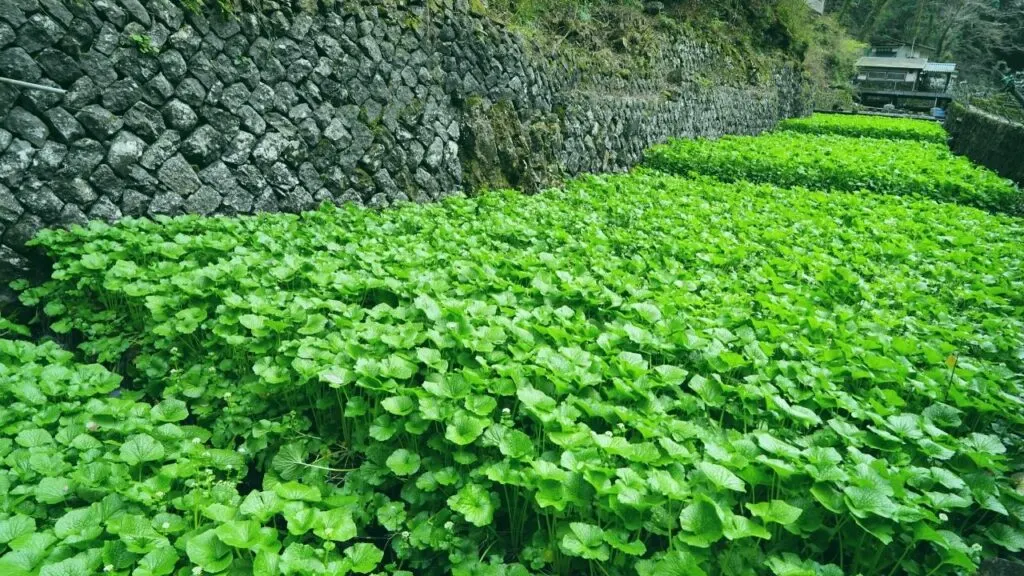
Also known as wasabi, the Japanese horseradish is one of the most popular spices, and is often served as a condiment to different types of sushi. The slow-growing perennial is a part of the Brassicaceae family, which includes the likes of mustard and radishes.
A distinct feature of this crop is its profitability. Research conducted just two years ago showed that a kg of fresh wasabi was retailing at $250. The hefty price tag makes sense considering how hard it is to grow the plant.
So much so that experts have crowned it as the “toughest plant to grow commercially worldwide.”
Some of the reasons that make it hard to grow include its high sensitivity to excess humidity and improper nutrient composition, both of which can cause the plant’s death.
There’s also the fact that its seeds are extremely difficult to find. Plus, growing wasabi on a large scale almost always results in pests and diseases.
If you’re lucky enough to get your hands on this plant, there are a few things you can do to increase its chances of surviving. Start by planting your wasabi in organic-rich, moist and loose soil.
If you’re planting several of these, ensure you leave an interval of about 12 inches between them.
It’s also important to water regularly, but don’t let it sit in waterlogged soil. Finally, keep the atmosphere cool. You can mist it occasionally to boost the humidity.
Conclusion
If you’re looking to challenge yourself in the gardening sector, attempting to grow these hard-to-grow vegetables makes for a great to start. They all pose a different issue, hence requiring a great deal of care.
The good thing is that by the end of it, you will have learned a thing or two that you probably wouldn’t if you’d not attempted to grow them.

Daniel has been a plant enthusiast for over 20 years. He owns hundreds of houseplants and prepares for the chili growing seasons yearly with great anticipation. His favorite plants are plant species in the Araceae family, such as Monstera, Philodendron, and Anthurium. He also loves gardening and is growing hot peppers, tomatoes, and many more vegetables.


